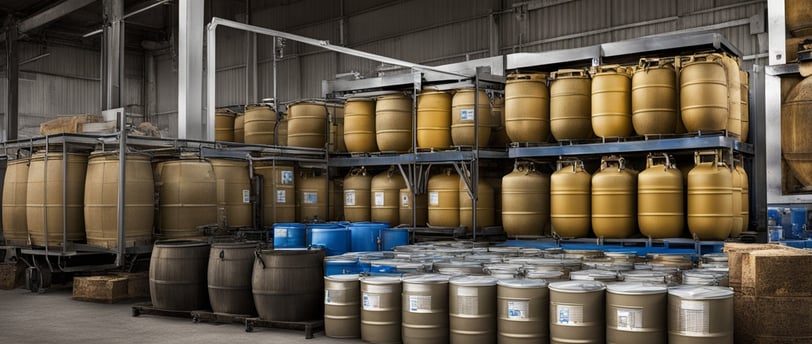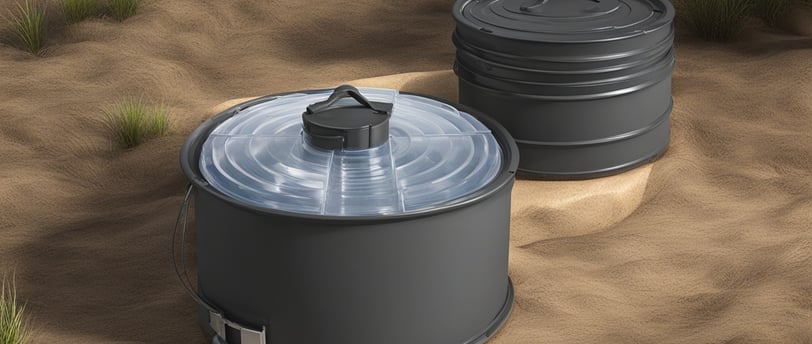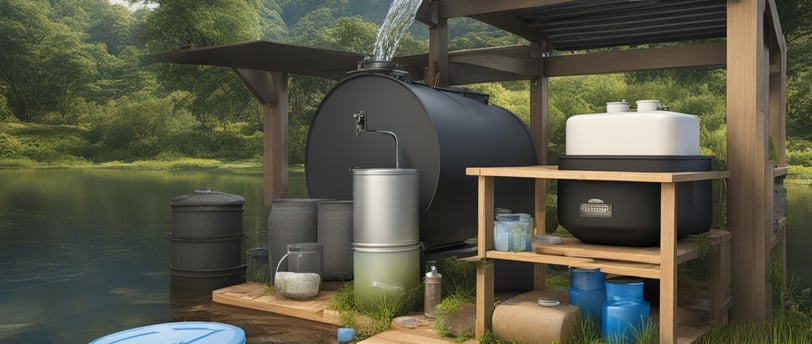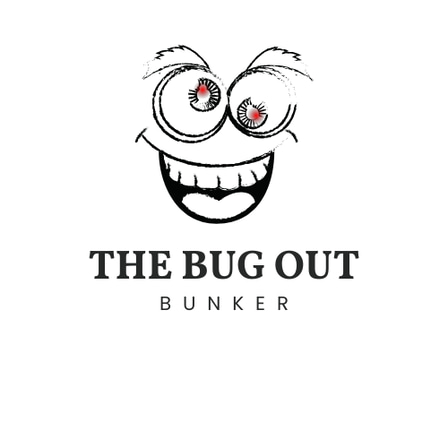Emergency Water Storage and Purification Essentials
Emergency Water Storage and Purification Essentials" is your ultimate guide to ensuring safe and clean water during a crisis. Learn practical strategies for storing water, the best purification methods, and crucial tips to keep your family hydrated and healthy when access to clean water becomes a challenge.
The Bug Out Bunker
8/16/20249 min read


In times of crisis, having clean drinking water is crucial.
It can mean the difference between life and death.
I know how important it is to store and purify water for emergencies.
By preparing now, I can ensure my family has safe water when disaster strikes.
Key Takeaways
Proper emergency water storage is essential for disaster preparedness
Potential water contamination risks during emergencies must be addressed
Food-grade plastic and glass containers are optimal for water storage
Boiling water and using chemical disinfectants are effective purification methods
Identifying alternative water sources can supplement emergency supplies
The Importance of Emergency Water Storage
When emergencies hit, having clean drinking water is key. It's vital to store water well to keep your family safe and hydrated.
Water Needs During Emergencies
You should store 1 gallon of water per person each day for 2 weeks. This covers drinking, making food, and basic hygiene. Having enough water can greatly improve your comfort during tough times.
Potential Water Contamination Risks
Water can get contaminated with bacteria, viruses, and chemicals. It's important to store and purify your water right. Not doing so can lead to serious health problems.
Buying emergency water storage and knowing water needs during emergencies are key to disaster prep. These steps help make sure your family has clean water to drink, keeping them hydrated and healthy.
Containers for Water Storage
Choosing the right container for storing water in emergencies is key. Food-grade plastic containers and glass containers are top choices. They keep your water safe and clean.
Food-Grade Plastic Containers
For storing water in emergencies, use heavy-duty food-grade plastic containers. They're tough, BPA-free, and safe for drinking water. Plus, they're affordable and easy to stack or hide in your home or office.
Glass Containers for Water Storage
Glass containers might break easily, but they have big pluses. They don't add chemicals to your water and are easy to clean. They're perfect for keeping water safe for a long time because they don't break down like some plastics do.
When picking emergency water storage containers, stay away from those that once held harmful stuff. They could make your water unsafe. It's important to label and store your containers right to keep your water safe and clean.
"The key to successful emergency water storage is choosing the right containers and maintaining them properly."

Purifying and Treating Stored Water
Keeping your stored water safe and clean is key in emergencies. Luckily, there are ways to make sure your emergency water is safe to drink.
Boiling Water for Purification
Boiling water is a simple and effective way to purify it. Just boil the water for 20-30 minutes to kill harmful germs. This water purification technique doesn't need any special chemicals or tools.
Chemical Disinfection Methods
If boiling isn't an option, you can use chemicals like unscented household chlorine bleach. Add 4-5 drops of bleach to each gallon of water and wait 20-30 minutes. This chemical disinfection method is a quick way to purify water when boiling isn't possible.
Choosing the right water purification technique is crucial. Make sure to treat your stored water before drinking it to prevent getting sick in an emergency.
"Preparedness is the key to survival in an emergency situation. Ensuring your water supply is safe and drinkable should be a top priority."
emergency water storage and purification
Having the right emergency water storage and purification is key for disaster preparedness. By picking the best containers and treating the water, you can make sure your family has safe water during emergencies.
Choosing the right containers is a big deal for emergency water storage and purification. Use food-grade plastic or glass jugs for disaster preparedness water storage. They're strong, easy to clean, and keep the water safe.
After picking your containers, make sure to purify and treat the water. Boiling water kills harmful bacteria and germs. Or, you can use chlorine dioxide tablets or drops for water storage for emergencies.
It's also key to regularly change your stored water. This keeps your emergency water storage and purification fresh and safe.
"Proper emergency water storage and purification are essential for ensuring your family's safety during unexpected events."
By following these steps, you'll know you're ready to keep your family safe and hydrated, no matter what.


Alternative Water Sources in Emergencies
If you run out of stored water, don't panic. Your home has other water sources you can use in emergencies. These can be key when you can't get to regular water.
Household Water Sources
Check your home for emergency water sources. You can find them in places like:
Water from the hot water heater
Water from the toilet tank (not the bowl)
Melted ice cubes
But remember, these waters might not be clean. You must clean them before drinking. You can boil the water or use chemicals like chlorine tablets or drops to disinfect it.
"Having alternative water sources on hand can make all the difference in an emergency situation. Don't overlook the potential water resources right inside your home."
Knowing about these water sources can help you and your family in emergencies. Always make sure to clean the water before drinking it to stay safe.
Preparing Your Emergency Water Supply
Keeping your family safe with clean water during emergencies is key. First, figure out how much water you'll need. Aim for 1 gallon per person each day. This will tell you how much to store for everyone.
Then, find containers that are safe for storing water. You can use plastic jugs, bottles, or clean barrels. Fill these with clean water and add a bit of unscented bleach to kill germs. Make sure to mark each container with what's inside and when you cleaned it.
Determine your household's daily water needs (1 gallon per person per day)
Acquire food-grade containers to store the water
Fill the containers with clean, treated water
Add a small amount of chlorine bleach to disinfect the water
Label each container with the contents and disinfection date
After you've set up your emergency water supply, keep it in a cool, dark spot. This keeps it safe from harmful things. Check the water often and change it out to keep it fresh and safe for when disaster strikes.
"Proper emergency water preparedness can make all the difference in a crisis situation."


Water Storage and Rotation
Keeping your emergency water supply safe and clean is key. By storing and rotating your water correctly, you make sure you have clean water when you need it most.
Storing Water Properly
For emergency water storage, remember a few important tips. First, fill your containers to the top to reduce air space, which can cause bacteria to grow. Keep your containers in a cool, dry spot away from chemicals or strong smells that could contaminate the water.
Choosing the right containers is also crucial. Food-grade plastic containers or glass jars are great choices. They are strong and won't add harmful chemicals to your water.
Rotating Your Water Supply
To keep your emergency water fresh and usable, you must rotate your water storage regularly. Use the oldest water first and replace it with new, clean water. Experts suggest changing your water supply every 1-2 years to keep it at its best.
"Proper water storage and rotation are crucial for maintaining the safety and drinkability of your emergency water supply."
By following these easy water storage best practices, you can be sure your family has a steady supply of clean water in emergencies.
Portable Water Filtration Systems
Having a reliable water supply is key in emergency situations. While stored water is important, think about getting portable water filtration systems too. These systems, like backpacking water filters, can change the game by making water from streams, lakes, or rain safe to drink.
Backpacking Water Filters
Backpacking water filters are light, compact, and easy to use. They're perfect for emergencies. These systems remove contaminants, bacteria, and viruses from water. This means you get clean drinking water. Many have advanced technology to work with different water types, giving you access to safe water when you need it.
Using a backpacking water filter lets you purify water anywhere. It's great for natural disasters or when you can't find clean water. These devices are compact and strong, making them a must-have for your emergency kit. They protect you from waterborne illnesses and contaminants.
"Having a portable water filtration system as part of my emergency supplies gives me the confidence to handle any water-related challenges that may arise."
When picking a backpacking water filter, look at flow rate, filtration capacity, and how easy it is to use. A good, reliable device means you always have clean, safe water.
Water Purification Tablets and Drops
In emergency situations, having reliable ways to purify water is key. Water purification tablets and drops with chlorine dioxide are handy and work well. They kill bacteria that make water smell bad and make it taste better without a bad taste.
Chlorine Dioxide Water Treatment
The Aquamira Chlorine Dioxide Water Treatment is a top choice. It can clean up to 60 gallons of water, great for being prepared for emergencies. This formula kills many harmful germs in water, like bacteria, viruses, and protozoa, making the water safe to drink.
Adding water purification tablets or drops is easy. Just put the right amount in the water, wait for a bit, and then you can drink it. It's ideal for hikers, campers, and anyone needing to purify water in an emergency.
"Chlorine dioxide water treatment is a game-changer for emergency water disinfection. It's effective, fast-acting, and leaves no unpleasant aftertaste."
For making sure your water is safe and drinkable in emergencies, water purification tablets and drops with chlorine dioxide are a smart choice. They offer peace of mind and keep you hydrated in tough times.
Water purification tablets and drops are a practical solution for emergency water disinfection.
Chlorine dioxide formulas like Aquamira can treat up to 60 gallons of water, making them versatile for various emergency preparedness needs.
These products effectively kill a wide range of waterborne pathogens, ensuring the water is safe to drink.
Using water purification tablets or drops is a simple and easy-to-implement process.
Grab-and-Go Water Containers
In emergency situations, having grab-and-go water containers can save lives. These portable containers let you quickly get and move essential water. Every second is crucial.
Collapsible Water Totes
The Alexapure 5-Gallon Collapsible Water Tote is a top pick. It's strong, BPA-free, and holds water for several days for one person. This makes it a must-have for your emergency kit.
It's easy to store and move because it folds up small. When disaster strikes, grab these totes and go. You'll have clean, safe water, no matter what.
They're perfect for any emergency. Their size and portability make them great for many situations.
"Having reliable, portable water storage solutions is crucial for weathering any emergency situation. The Alexapure Collapsible Water Tote provides the peace of mind and preparedness I need."
Conclusion
Having a reliable, clean water supply is key to emergency preparedness. This article has given you expert tips to make a good water storage and purification plan. This plan will keep your family safe and hydrated during unexpected disasters or when the tap runs dry.
It's important to store water in the right containers and use methods like boiling and chemical disinfection to purify it. This guide has given you the knowledge and strategies to keep your household's water safe and clean.
Being ready for emergencies like water shortages or contamination is crucial. By working on your emergency water storage and purification skills, you ensure your family has enough water for any crisis. This preparation can make a huge difference in keeping your family safe.
FAQ
Why is emergency water storage and purification important?
Having clean water is crucial in emergencies. It can mean the difference between life and death. It ensures your family has safe water when it's most needed.
How much water should I store for emergencies?
You should store 1 gallon of water per person each day for at least 2 weeks. This covers drinking, cooking, and some hygiene.
What are the best containers for emergency water storage?
Use containers made of food-grade plastic, like heavy-duty polyethylene. Glass is also good but can break easily. Don't use containers that held toxic substances before.
How do I purify stored water before consumption?
Purify stored water to kill harmful germs. Boiling it for 20-30 minutes is safest. Or, use unscented chlorine bleach, adding 4-5 drops per gallon and waiting 20-30 minutes.
What are some alternative water sources in my home during an emergency?
If you run out of stored water, look at other sources at home. Consider water from the hot water heater, toilet tank, and melted ice cubes. Always disinfect these before drinking.
How do I properly prepare and maintain my emergency water supply?
First, figure out how much water your household needs. Use food-grade containers and fill them with clean water. Treat it with chlorine bleach.
Label each container and keep track of when you treated it. Store it in a cool, dark place away from contaminants. Use the oldest water first and replace it every 1-2 years with fresh water.
What other emergency water purification options should I consider?
Besides stored water, think about portable filters for emergencies. Water purification tablets and drops with chlorine dioxide are also handy for cleaning water fast.
What type of grab-and-go water containers are recommended for quick evacuations?
For fast evacuations, use grab-and-go containers like the Alexapure 5-Gallon Collapsible Water Tote. They're strong, BPA-free, and can carry water for several days. Their design also makes them easy to carry in small spaces.
Source Links
https://www.beprepared.com/collections/water-storage - Water
https://deq.utah.gov/drinking-water/emergency-water-storage - Home Water Storage for an Emergency - Utah Department of Environmental Quality
https://www.beprepared.com/products/emergency-water-storage-purification-kit - Emergency Water Storage & Treatment Kit
Thanks and best regards
The Bug Out Bunker
Visit the link below and discover Aqua tower
This post may contain affiliate links. If you make a purchase through one of these links, we may earn a small commission at no additional cost to you. We only recommend products and services that we have personally used and believe will add value to our readers. Your support helps us continue to provide valuable content. Thank you for your support!
Survival
Stay prepared for any scenario with our expert insights.
© 2024. All rights reserved.
